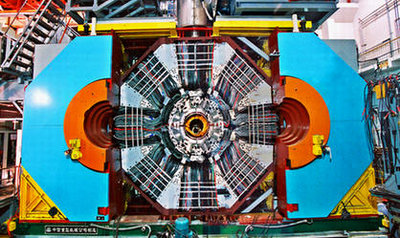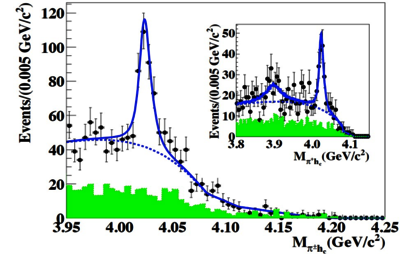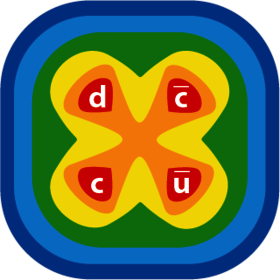
The BES III Experiment at the BEPC-2 electron-positron collider at IHEP in Beijing (China) uses colission energies from 3.5 GeV to 4.7 GeV for the spectroscopy and the investigation of the structure of light and heavy hadrons and is in operation since 2008.
Exotic Charmonium
Quantum chromodynamics is the well accepted theory for the strong force which was first discovered in nuclei and later refined to be the interaction among quarks and gluons (i.e. the consituents of the proton and the pion). The very existence of baryons and mesons is derived from the properties of this field theory. But symmetry principles allow even more topologies rather than only 3 quarks or a quark and an anti-quark. Unfortunately the theory is still unable to calculate their properties from first principles and so the existence of so called exotics remained unclear. In this spirit the search for meson-meson bound states or tetraquarks is an important quest to understand the binding among quarks. A recent important step was the doubtless discovery of the Zc(3900)± in 2013 which cannot be explained in a 3- or 2-quark picture.
Thus, the detection of the Zc(3900)± with a minimum of 4 constiuent quarks was one of the greatest discoveries in this decade and the top highlight of this year in physics (source APS).
see the official GSI Press Release from 09-04-13







